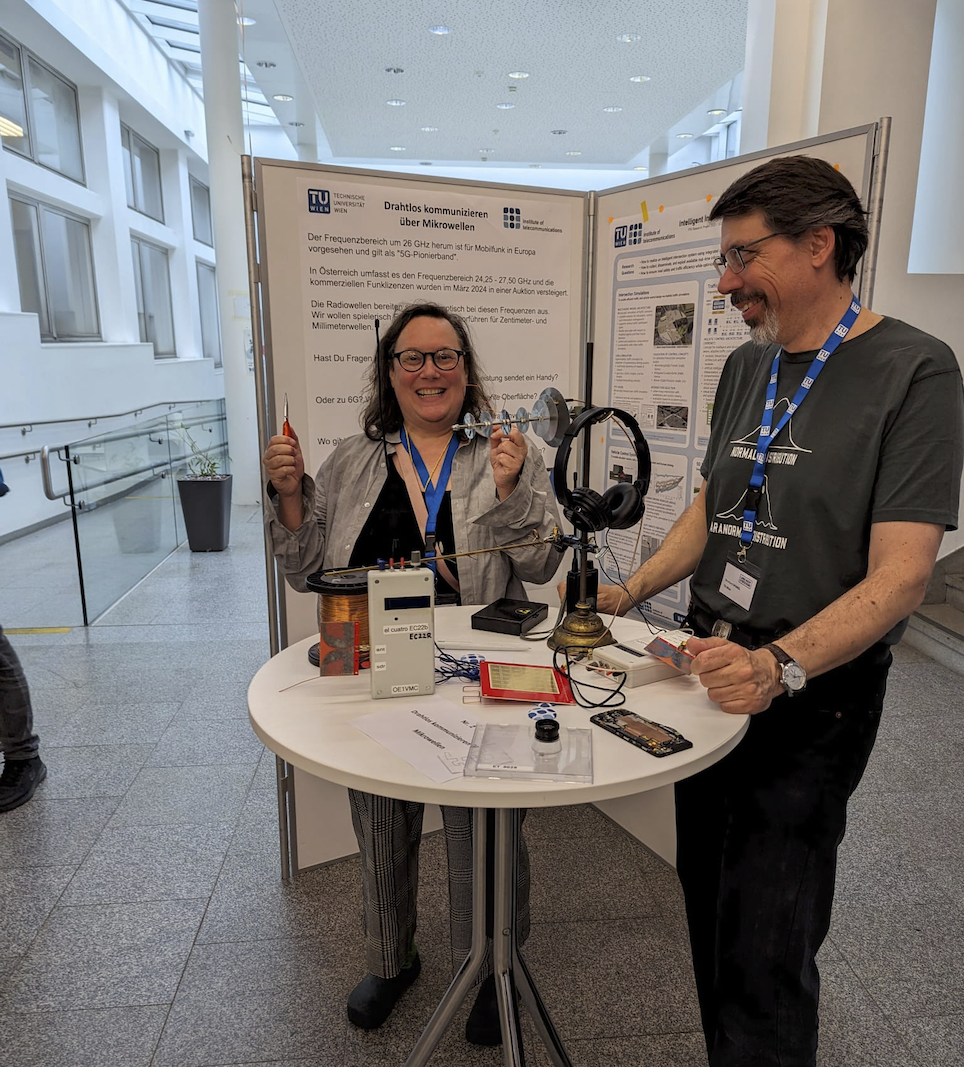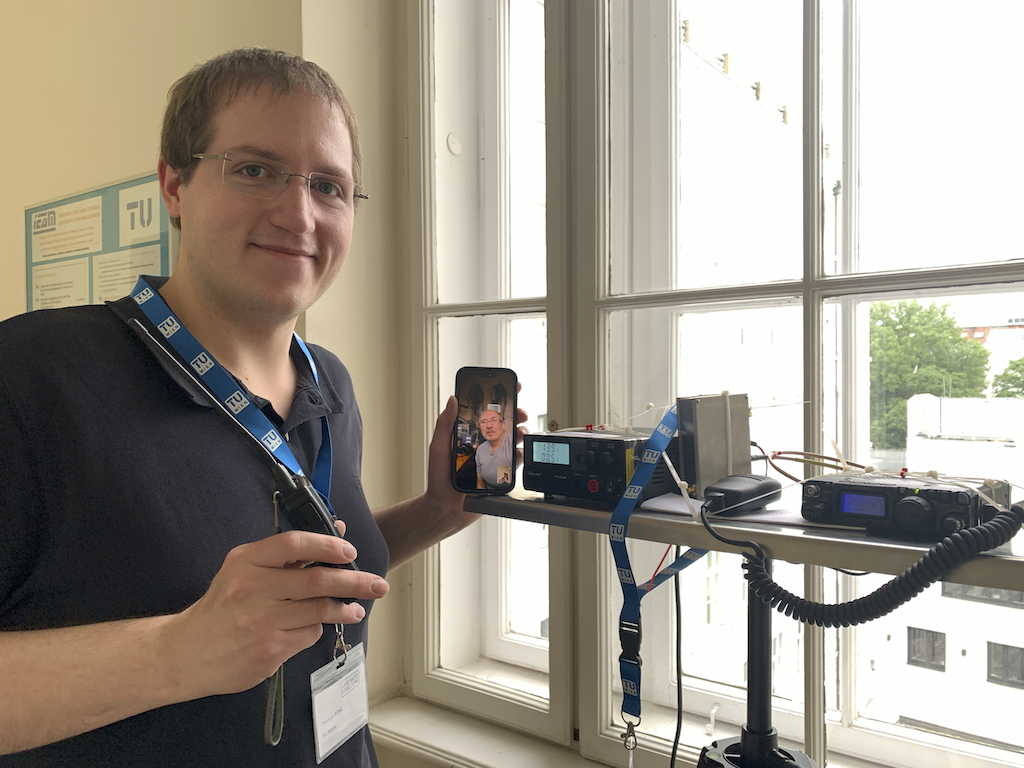The program will remain https://langenachtderforschung.at until 31 August 2024 to allow you to browse the programme in retrospect.
In Vienna’s fourth district, TU Wien offered a varied program on computer science, electrical engineering, and information technology at the Gußhaus campus.
The Institute of Telecommunications and the Radio-Amateur-Klub of the TU Vienna (callsign OE1XTU) invited to a hands-on transceiver station: Wireless communication via microwaves on the 23cm band. A simple all-mode portable station for the 23cm band was set-up in April 2024 by Johannes Pichler (OE3JPC) and Chris (OE1VMC) with around 1-2 W transmission power and an HB9CV PCB antenna. The portable station is based on a YAESU FT-817ND radio with a transverter from SG-Labs, see
https://www.sg-lab.com/TR1300/tr1300.html

